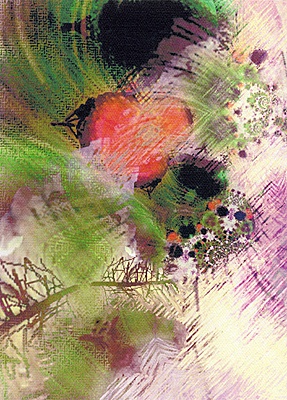All Nonfiction
- Bullying
- Books
- Academic
- Author Interviews
- Celebrity interviews
- College Articles
- College Essays
- Educator of the Year
- Heroes
- Interviews
- Memoir
- Personal Experience
- Sports
- Travel & Culture
All Opinions
- Bullying
- Current Events / Politics
- Discrimination
- Drugs / Alcohol / Smoking
- Entertainment / Celebrities
- Environment
- Love / Relationships
- Movies / Music / TV
- Pop Culture / Trends
- School / College
- Social Issues / Civics
- Spirituality / Religion
- Sports / Hobbies
All Hot Topics
- Bullying
- Community Service
- Environment
- Health
- Letters to the Editor
- Pride & Prejudice
- What Matters
- Back
Summer Guide
- Program Links
- Program Reviews
- Back
College Guide
- College Links
- College Reviews
- College Essays
- College Articles
- Back
The Great Equalizer
Death comes for us all eventually. The rich, the poor, the in-between. Every single one of us will succumb. Every socialite, every college student, every businessman. It’s only a matter of time.
Death is the great equalizer.
That seems to be the running theme in this painting.
If you can even call it a painting.
For one, it’s a huge white canvas with a single black dot in the center. That’s it. The tiny rectangular description next to it reads, Relieved of Life: Artist John Samuels explores the fleeting nature of life in a minimalistic piece. The stark contrast between the huge white canvas and the single black dot show that, sometimes, death is the only favorable response to the endless torture that we call living.
A group of people looks at it in awe, whispering to each other in hushed voices.
“Absolutely brilliant,” a man in a white button-down breathes, momentarily fogging up the glass frame. Everyone around him nods and mmmms in agreement, looking vaguely confused.
Pretending to like abstract art must be the great equalizer too.
It’s one of those private auctions with free food, so I pile cheese cubes onto a napkin and go to town on the open bar. I stroll around listening in on several conversations where even more perplexed people act like they know what’s going on.
I hear words like, “exquisite,” “tormented,” and my own personal favorite: “deceptively simplistic.” Yeah, I snort, a little bit of the cider in my plastic champagne flute splashing down the front of my shirt. Deceived is right. I can’t believe I actually agreed to come to one of these.
I rock onto the toes of my scuffed dress shoes, looking for my friend, Michael. Michael likes this kind of stuff. By that, I mean he likes to show off how much he knows about this stuff and the attention it gets him. I spot Michael over by a black canvas with a red triangle on it, talking some poor guy with glasses to death.
“...and you can see the brushstrokes were all painted pointing in the same direction. I feel like that represents how stuck we are in our own habits, only to realize later that we’re caged, and the only thing beyond ourselves is this great expanse of nothingness. Only I don’t feel: I know. Having a useless art studies degree from a prestigious university really comes in handy! Har-har-har-har.”
Okay, he didn’t say that last part entirely. But you have to believe that the guy in the glasses really looked uncomfortable. Maybe even a little annoyed.
“Come on, Michael.” I make my way over and shoot a reassuring grin to the guy in glasses as if to say, I got this. You’re welcome. “No one cares actually cares about abstract art. These paintings are so stupid! Literally, every single thing I see is a shape with a lot of empty space. I could do that.” I rack my brain for the name of a less-than-intelligent life form. “Turkeys could do that.” Oh yeah. That one cuts.
Michael rolls his eyes. “Obviously someone as pedestrian as you would never understand the merits of such amazing artwork. Take some time to read the descriptions. I hope they’re simple enough for your understanding.”
“I hope these shapes are simple enough for your understanding - oh, wait. They totally are.” I stare pointedly at the single triangle in the painting. “Or is that just another way the artist communicates to the audience that thinking so simply is actually what leads them to misinterpret the art?” The sarcasm in my voice is unmistakable.
“Um, yes, actually-” The guy cuts in, pushing his glasses up his nose. “The art was supposed to represent-”
Michael barely tries to stifle a laugh. “Did you graduate from a prestigious university with a degree in art studies? I don’t think so.”
“No one has to go to art school to know that abstract art is pointless, Michael. Slap a vivid description of a traumatic experience on a plate of toast and make a fortune compared to the millions of other, real artists that don’t make it.”
Michael’s eyes narrow. “I’ll have you know that Plate of Toast was inspired by the death of the artist’s mother. The toast represents their relationship, and the crumbs represent how it fell apart in the years leading up to her death.”
He turns his eyes onto the guy with glasses. “I’m sure you know that abstract art has depth beyond our understanding. Don’t these paintings fill you with a sense of your own mortality? I’m absolutely sure that was the goal of the artist. In fact, I probably interpreted these pieces better than the artist himself, and I didn’t even live through his experiences.”
I mime throwing up in an elaborate way to get Michael’s attention. We’ve actually attracted a bit of a crowd, the onlookers looking up from their conversations to watch ours. “Give me a break. This guy agrees with me. He was probably dragged here too.” I place an elbow on the guy’s shoulder. “Do you hate abstract art? You do, don’t you? You seem way too cool to be like him. What’s your name, anyway?”
The guy with glasses stiffens under my arm, picks it off his shoulder, and drops it by my side, glaring at us both the entire time.
“John Samuels.”

Similar Articles
JOIN THE DISCUSSION
This article has 0 comments.
